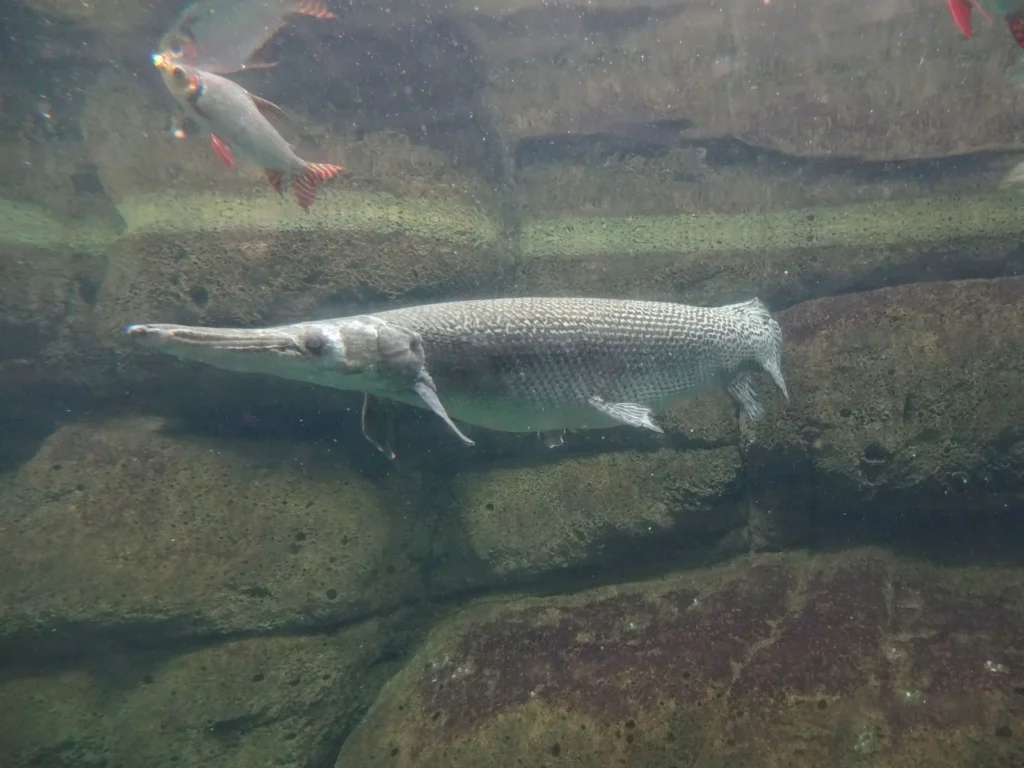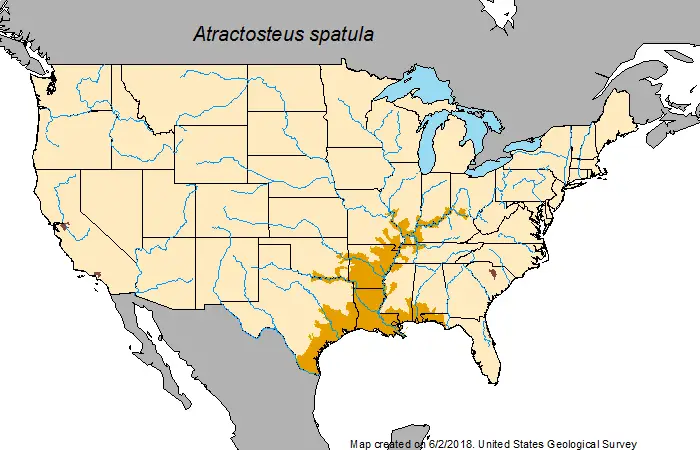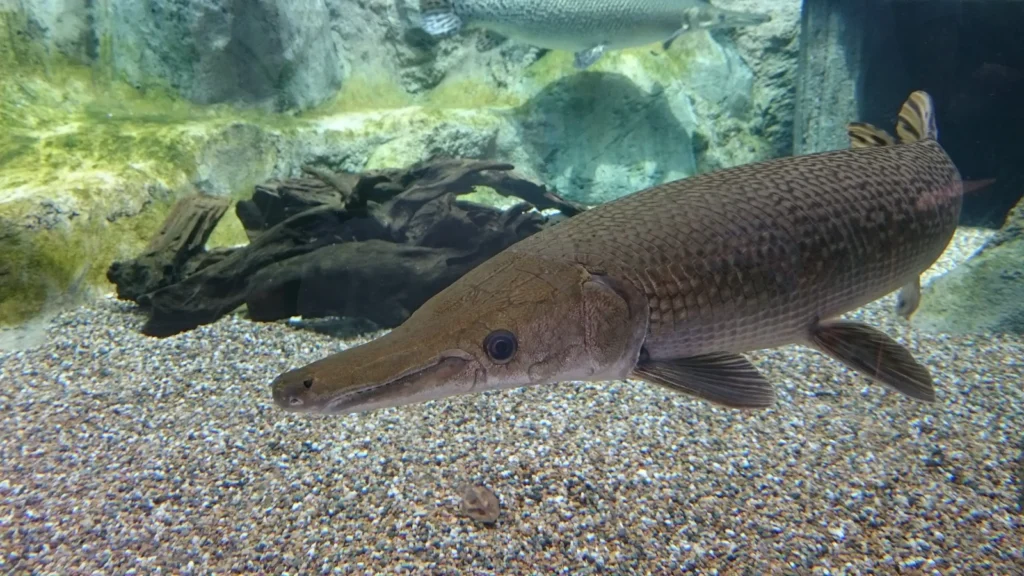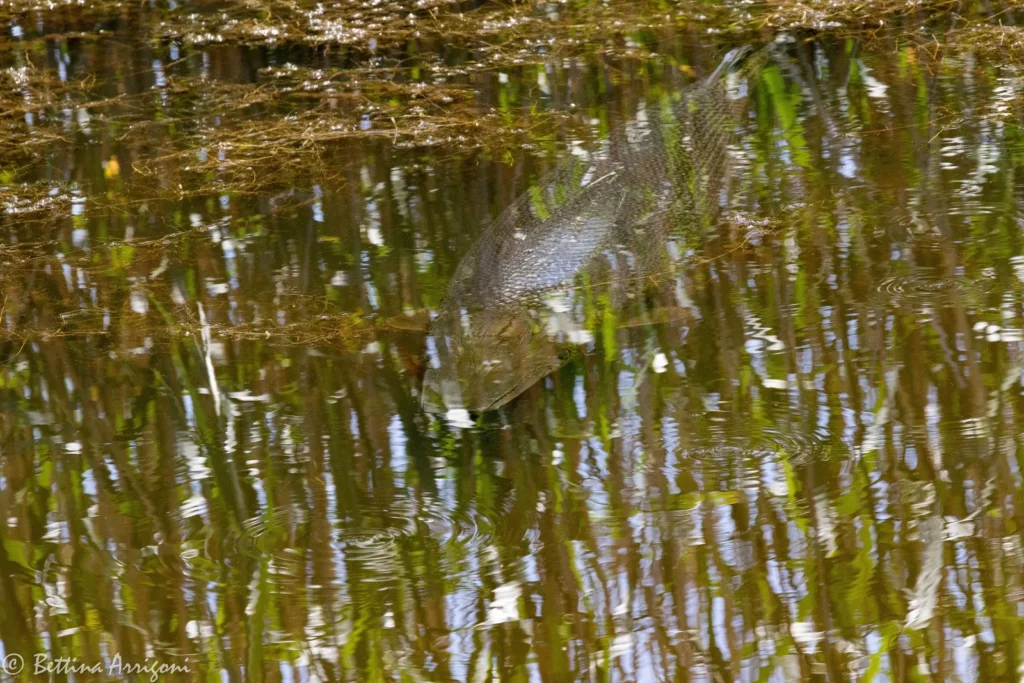Mississippian shell (Atractosteus spatula)- this is one of the oldest fish that It's been around for over 100 million years. Its predatory nature, massive armored scales, and unique anatomy make it a real animal. "living fossils”which survived the dinosaurs and has hardly changed until today.
🔹 What makes a sink unique?
✅ It belongs to the relict Fish that existed in the Cretaceous period
✅ It has armored scales similar to the shell of an alligator
✅ It can breathe both gills and atmospheric air due to the special structure of the swim bladder
✅ One of the largest freshwater predators in North America
This article will tell you about origin, appearance, habitat, behavior, nutrition, reproduction and role of this fish in nature and culture.

Scientific classification
🔬 Classification of the Mississippi shell:
✔ The Kingdom: Animals (Animalia)
✔ Type: Chordal (Chordata)
✔ Class: Lucheperi (Actinopterygii)
✔ Row: Carapaces (Lepisosteiformes)
✔ Family: Pantsirnikovye (Lepisosteidae)
✔ Gender: Atractosteus
✔ View: Atractosteus spatula
📌 Interesting!
Name of the genus Atractosteus it comes from the Greek words “atractos” (Arrow) and “osteon” (bone), which alludes to the long body shape and bony armor of this fish.
Appearance and anatomy
, Main Features:
✔ Length: 1.5-2 m (record - 3 m)
✔ Weight: 45-90 kg (max up to 137 kg)
✔ Life span: 50-70 years old
🔹 Appearance:
✅ A long, streamlined body that looks like a torpedo
✅ A massive head with an elongated mouth filled with sharp teeth
✅ Dense diamond-shaped scales that protect against attacks from other predators
✅ Dark, olive-green or brown coloration with spots that help to disguise
📌 Interesting!
The scales of the carapace are so strong that even arrows and knives can't break through it!

Habitat and distribution
🌍 Where does the Mississippian Shell live?
It is common in the great rivers, lakes, and swamps of North America, in particular in the river basin Mississippias well as in the Gulf of Mexico.
🔹 Typical habitats:
✅ Slow-moving rivers and stagnant reservoirs
✅ Swampy areas with rich vegetation
✅ Flooded forest areas and coastal lagoons
📌 Interesting!
Carapaces they can live in water with low oxygen levelsbecause they are able to breathe atmospheric air!

Lifestyle and behavior
🔹 Basic behavioral traits:
✔ Almost motionless for most of the day, waiting for prey
✔ Hunts by ambush method, sharply attacking the victim
✔ It can float on the surface, absorbing atmospheric oxygen
✔ Lives alone or in small groups
📌 Interesting!
Carapaces they have no natural enemies in their water bodies, except for alligators and large sharks in brackish waters.
Food
Mississippian Shell – a voracious predatorwhich hunts a variety of prey.
🔹 What does he eat?
Fish (catfish, carp, perch)
✅ Crustaceans
✅ Waterfowl and small mammals (sometimes)
🔹 Hunting methods:
✔ Uses ambush tactics - remains stationary and attacks rapidly
✔ Uses sharp teeth to hold down prey
✔ Can quickly swallow whole fish
📌 Interesting!
His jaws so powerful that they can easily crush the skull of a large fish!
Reproduction and development
🔹 Features of reproduction:
✅ Reaches sexual maturity at the age of 10-14 years old
✅ Spawning occurs in spring, in shallow flooded areas
✅ Caviar is poisonous to humans and most animals
📌 Interesting!
Young shells look like small alligators because of the elongated head and scales.

Natural enemies and threats
🔹 Natural enemies:
Al alligators
Great big sharks
🔹 Threats from humans:
⚠ Poaching (due to the value of caviar and scales)
⚠ Destruction of natural habitat
⚠ Adjusting the water level in rivers
📌 Interesting!
Although the carapace is caught by fishermen, it is not commercially valuable because of the hard meat..
Carapace and man
🔹 Commercial value:
✅ Used in sport fishing
Чеш Scales are used for making jewelry
Является Is an object of research through its "ancient" genome
📌 Interesting!
Carapaces extremely hardy - they can live even in polluted water bodies.
Interesting facts about the carapace
✔ Dinosaur Survivor
✔ It has one of the most durable carapace coatings among fish
✔ Can survive without water for several hours if there is moisture
✔ One of the longest-lived freshwater predators
✔ It has two rows of teeth in the upper jaw
Conclusion
Mississippian Shell – a unique living relic, left over from the time of the dinosaurs. It armored body, powerful jaws and exceptional endurance they make it one of the most interesting representatives of freshwater fauna.
📢 This fish is a real dinosaur of our time! 🐊🐟